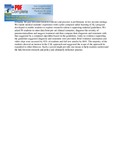| dc.contributor.author | Senga, John | |
| dc.contributor.author | Ndiritu, Moses | |
| dc.contributor.author | Osundwa, Juliana | |
| dc.contributor.author | Irimu, Grace | |
| dc.contributor.author | English, Mike | |
| dc.date.accessioned | 2013-04-16T12:40:36Z | |
| dc.date.available | 2013-04-16T12:40:36Z | |
| dc.date.issued | 2010 | |
| dc.identifier.citation | Int Health. 2010 September; 2(3): 212–215. | en |
| dc.identifier.uri | http://www.ncbi.nlm.nih.gov/pmc/articles/PMC3000595/ | |
| dc.identifier.uri | http://erepository.uonbi.ac.ke:8080/xmlui/handle/123456789/16160 | |
| dc.description | Full text | en |
| dc.description.abstract | Bridging the gap between research evidence and practice is problematic in low income settings. Wereport medical students' experience with a pilot computer aided learning (CAL) program developed to enable students to explore research evidence supporting national guidelines. We asked 50 students to enter data from pre-set clinical scenarios, diagnose the severity of pneumonia/asthma and suggest treatment and then compare their diagnosis and treatment with that suggested by a computer algorithm based on the guidelines. Links to evidence supporting the guideline-suggested diagnosis and treatment were provided. Brief evidence summaries and video clips were accessed by 92% of students and full text articles by 86%. The majority of the students showed an interest in the CAL approach and suggested the scope of the approach be expanded to other illnesses. Such a system might provide one means to help students understand the link between research and policy and ultimately influence practice. | en |
| dc.language.iso | en | en |
| dc.subject | Computer-aided learning | en |
| dc.subject | Evidence-based medicine | en |
| dc.title | Computer aided learning to link evidence to paediatric learning and practice: a pilot in a medical school in a low income setting | en |
| dc.type | Article | en |
| local.publisher | Department of Paediatrics | en |

